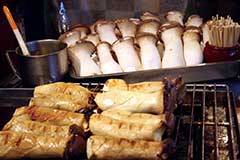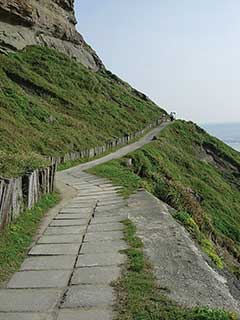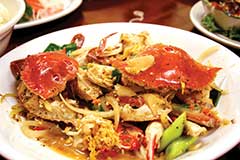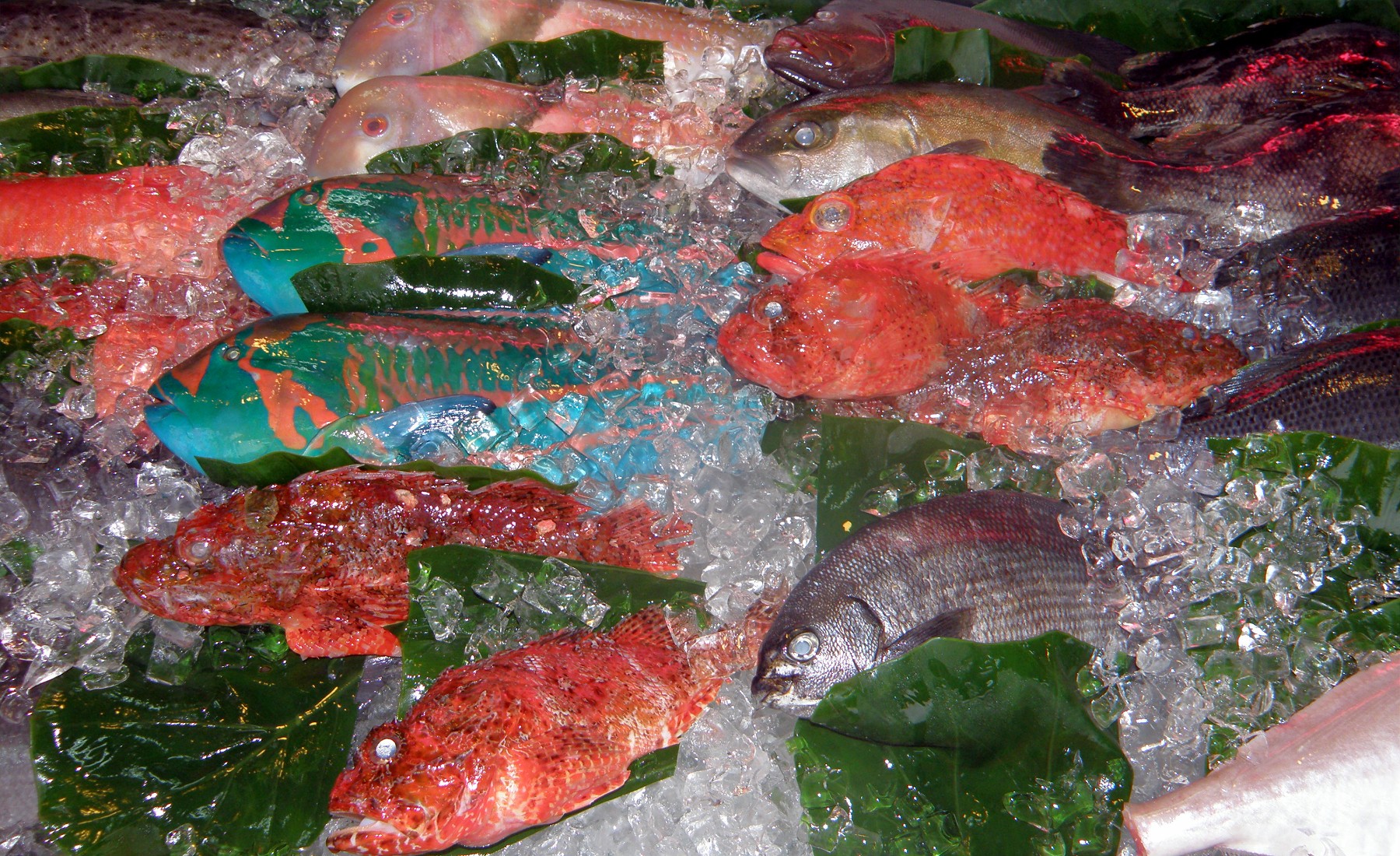| Gold Mine Exploratory Journey JIOU FEN-JIN GUA SHI route |
Gold Ecological ParkThe park emphasises on preserving culture heritages; therefore, the original buildings in the park are well preserved. Among the architectures in the park, there is the BenShan Wu Keng Ancient Trail, Japanese style buildings, light vehicles way, gold museum, gold temple, gold furnace, old post office, police office, residence of "Mige Kiku Zirou" and Crown Prince Chalet…etc. The Gold museum has the world largest gold brick, weight 220 kg with 99.9% purity. Crown Prince Chalet’s architecture is purely in Japanese Style and worth a close examination, such as the Fuji Mountain window. The attention in details of this building proves the privileged status of the owner at the time. Direction: From KeeLung training station (in front of the Yi Mei Store), takes KeeLung bus to JiouFen and get off at JinGuaShi Station. By car, get off at The RuiFang NuanNuan exit and follow the road signs. | 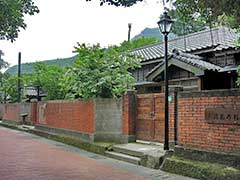 |
Fu Shan TempleConstructed in 1848, the marvelous sight of "temple within temple" proves how the miners appreciated the local spirits. The topless angel above the local spirits expressed the liberal nature of Jiou Fen culture. Cherry blossoms spread throughout the trails around the temple has an interesting story: Japaneses planted them during the occupation in order to encourage miners to go outdoor instead of staying in the local brothels. Direction: Bus to Qin Xian junior high school station. By car from Jiou Fen, take 102 route towards to Jin Gua Shi. | 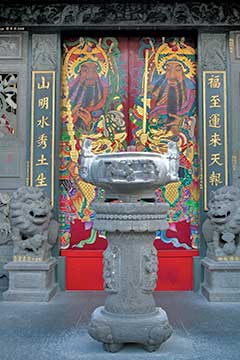 |
Little Jin Gua ExposureShaped like a head of hippopotamus, this is the place where gold was first discovered in Taiwan. In 1890, a rail road construction worker of Liu Ming Zhuan (the governor of Taiwan at the time) found gold flakes while washing his lunch box in the KeeLung River, he then went upstream and found the exposure. The amount of gold was so much that a bowl of mud can extract a handsome sum of gold. During Japanese occupation, this place was once known as the “Gold City of Asia”. Direction: 19.5km on No. 102 route. |  |
BaoShi Mountain Observatory DeckThe observatory platform is located at the highest point of Jun Gua Shi Mountain, facing the Eastern Sea, used to be an important military base. Constructed above the wooden pathway on the crest line, stray dogs can be seen here from time to time. It gets windy but the view is broad. Jin Gua Shi and Shui Nan Dong can be seen from here. Direction: Go up the road on the right side of the Quan Ji Temple. |  |
Lian Dong Elementary SchoolBuilt on the side of the KeeLung mountain, this school were full with children of the miners, the school had about one thousand students at one point. The campus is exceptionally located, with Pacific Ocean on the east, tea pot mountain down south, KeeLung mountain on the west, and KeeLung Island up north. The slide beside the entrance is fun and it is also the longest school slide of any Taipei province. Direction: Turn Right at 81.5 km point of Tai No 2 road, go up from the right side of the mountain road. | 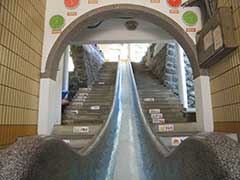 |
Big Cu Keng Town(1893-1980)Literally means “big hole”, an area lack of rich soil. There were about 300 families here due to mining business back in 1930, more than a thousand people came in and out here everyday back then. It had a nickname of "village of forigners" as a metaphor for its fine living standard. Here is also the home town of the famed film director Wu Nian Zhen. This place has been deserted for years; lively twon, hospital, school, and pool rooms are now in distant memories. Direction: Westside hill of the Little Gin Gua . |  |
"Never Bored" PavilionThis pavilion is located between Jiou Fen and Shuang Xi. The name came from a famed ancient poem “Never Bored looking at each other” by Li Bai. The comforting breeze, silver grass by the road, with the wonderful view of mountains and sea, driving on No 102 road here is like exploring a romantic secret. Direction: Form Jiou Fen go on No 102 Road toward Shuang Xi. | 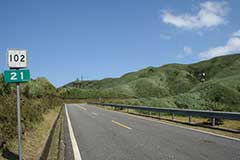 |
Thirteen Floor RuinThis ruin plant with thirteen floors processed bronze from the area. Built in 1933 and shuttered in 1981. Location: About 81km into Tai No 2 road above Ling Dong Bay. |  |
Jin Gua Shi Geography ParkIf little Jin Gua exposure is the beginning of Jiou Fen mining history, then the geography park would be the first chapter. Jin Gua, literally means “Gold melon”, the name came from the melon-shaped mountain. Follow the same trails that the miners once walked to get closer to the old mines. Location: 18km into No. 102 Road. | 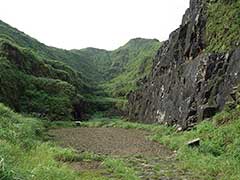 |
Qi Tang Old StreetJiou Fen’s old street is the Ji Shan Street, also has the nickname as the “dark street”. Jin Gua Shi’s old street is Qi Tang road. For visiters who like the crowd, visit the lively Jiou Fen Old Street. To experience the silent nature of an abandoned mining town, visit Qi Tang Old Street. Black greasy asphalt roof, lazy cats, endless stairs, one fruit shop, one comic shop and one grocery store is all that has left. Direction: Take the stone stairs down from the left side of the Quan Ji palace. |  |
Gold CoastThis is the only sea in the world which contains gold flakes. Color of the sea varies depending on weather and season. Due to the acidic water from the mines, Fe3+ composite floats above the sea water. However, it is a natural phenomenon rather than a man-made pollution. Natural factors such as the sea breeze, earth rotation and its landforms, this golden section will not disperse. Location: About 80.7km on the Tai No 2 road. |  |
TaiYang Mining CompanyThe mining right was purchase by Yan Yun Nian from the "Fuzida" group during the Japanese occupation, later formed the Tai Yang Mining company as the administration of Jiou Fen mining. Beside the company, twisted roots from the banyan trees are visible on the ground. The most beautiful mining cave of JiouFen, Ba Fan cave, is located beside the company, close to the Shu Qi road and Qi She Road intersection. Location: Below the Jiou Fen Police Station. |  |
Gold WaterfallDue to the mining history, underground water sprout out and became a striking waterfall. Waterfall's direction and sound changes according to the rain fall. When the rain water mixes with Iron and Carrollite, it oxidized and catalyzed by bacteria within iron and becomes yellowish-orange acidic water. Direction: Take Tai No. 2 road then turn to the Jin Shui road, go upwards to the mountain and the Chang Ren Community. |  |
Jiou Fen Old StreetEntering from the JuiDao entrance besides 7-11 convenience store, many local delicacies can be found in the JiShan Street, such us taro balls, JinZhi meat ball, taro sweets & vegetable rice pudding, grilled King Oyster mushroom, “Taiwan Treasure” Oolong Tea and traditional desserts of LiYi cake shop from Keelung. Shops are concentrated in the first quarter of the Old Street. In order to see a different Jioufen, Please walk through the rest to experience the full small mining town culture.
 |   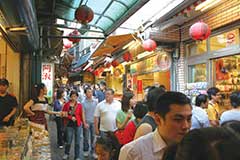 |
A-Mei TeaHouseThe tea house owner A-Mei is also an experience dancer. She blends the dance rhythm into its interior design. The building has the typical low roof of Jiou Fen. Open windows were designed for the fresh mountainous air. With the extension of sea view and mountain view, the fixed interior space now seems limitless. During the rainy season, the rain drops fall down from the low roof, form a beautiful water curtain that leads people into their own imagination The relaxed space is suited for either tea or meal. The most popular meal for Japanese tourist is “farmhouse lunch set”, which features okra, salted vegetables, egg abalone salad, sweet fried taro & pork…etc. They are light and low in salt. On the tea menu, “past love” is a Oolong winter tea with a hint of fruit. Its tea leaves can be used nine times without losing its flavor. It is suggested to pair this tea with tea biscuit made with shredded tea leaves. The biscuit is flavorful and does not leave residue in your mouth. It is baked on order to ensure crispiness and quality. Address: No.20, Shixia Ln., Ruifang Township, Taipei County 224, Taiwan |   |
Sky Castle Tea HousePhone: 886-2-2496-7767Address: No.308, Qingbian Rd., Ruifang Township, Taipei County 224, Taiwan Product & Services: tea, coffee, light meals and pottery |  |
